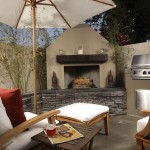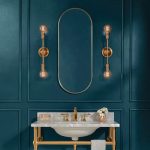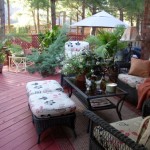When a new client calls me, typically it’s because something about their home’s interior doesn’t feel or look quite right, but they’re having a hard time putting a finger on what’s not working and an even harder time fixing it. In about 95 percent of cases, their décor dilemma results from a few common problems. I’ll describe the top five culprits and help you avoid or correct them in your house.
1. Size matters: When decorating, this old joke really does ring true. Getting the scale of your furniture and accessories right will make a huge difference in the overall feel of a room. In many cases, people choose furniture that’s too small. Homes built in the last few years have very hi v gh ceilings. If the furniture is too small in a tall room, it ends up looking like miniature doll furniture. Choose pieces that will help fill the space and volume of the room.
I also see plenty of scale problems on walls. A small picture will get lost on an expansive wall. It will never look or feel right to you. So fill up that space with either a much larger single picture or two matching or complementary pictures hung next to one another.
2. Less is more: Trust me, I know how hard it is not to buy lots of different décor items for your house. Nobody loves to shop for home accessories more than me. But beware of creating a house that looks crammed full of stuff. Visually speaking, your eye needs a chance to rest as it scans a room. Many times I see homes brimming full of smaller items like candles, picture frames, small ceramics, etc., and it ends up looking and feeling cluttered. If you’ll put away some of the little stuff and use fewer, larger items, you’ll achieve more impact. Using fewer things lets your eye see each item better and you don’t feel overwhelmed.
3. No more matchy-matchy. This is a tough one for many people because we’re all accustomed to seeing complete furniture sets sold in stores. Some people may really like that look, but, in my opinion, having a room full of pieces from the same “set” can make the space feel a bit dated and dull. The main reason so many people have furniture sets is because that’s how some furniture stores prefer to sell them. They’re also catering to customers who don’t want to work too hard furnishing a room, so they buy a whole set and call it done.
If you want something more eclectic and updated, don’t fall into the old habit of buying a set. Or if you already have a set at home, try breaking it up into different rooms to create a look with more visual interest.
4. Color me happy. We all know how important the right colors are in our homes. Most people are great at selecting their favorites. But some don’t pay much attention to how color flows throughout the house. You don’t want to walk from one room to another and feel like you’ve just visited two entirely different homes. Overall, you want your home to feel cohesive. (The exception to this rule is in kids’ rooms. It’s more than okay to go a little crazy with color and theme in a kids’ room. After all, it should be a fun, colorful place that reflects the personality of the kid who sleeps there.)
I’m not suggesting you create a sea of beige in your home. But when you use different colors, try to make sure they all stay in the same degree of intensity. No pastels with bright reds. If you want a big, bold color, try using it on an accent wall first. Same goes with furnishings. It feels odd to go from one room with very contemporary, modern furniture into one filled with very traditional pieces.
5. Lighten up. Many times I walk into a new client’s home and notice that the overhead light is the main or only one being used in each room. I say, “Get thee to a store and buy some lamps.” There are so many inexpensive, great-looking lamps out there these days. And lamp light will always create a softer, homier ambiance. Use your overhead lighting only when you’re dusting or cleaning up. It just feels too institutional.
Speaking of lamps, I’ve got to reiterate the first rule about scale. Try to align the size of your lamp (especially its base) with the size of the table it’s on. No tiny lamps on huge tables, and vice versa. Don’t feel like all the lamps have to match or be the same type. Mix floor lamps with table lamps. But don’t put an up-light or torchiere style lamp next to a chair you intend to use a reading spot. It won’t help you see your book or magazine and it won’t look right, either. Really think through how you use each part of the room and light it accordingly.
So there’s the top five design demons, and the good news is they’re all very fixable. But if you’re struggling to create the look you want, don’t keep buying new furniture or accessories in an effort to “get it right.” You’ll drain your energy and your bank account. Your money might be better spent on a short consultation with a designer who can help you see the problems and how to correct them. Many people think they could never afford to use a decorator. But there are plenty of us out here who charge a very reasonable hourly fee and we don’t all insist that you buy a house full of new, expensive things. I love doing a “re-design,” when I rearrange and refresh a room without buying anything new. Clients are always amazed at how different and new a room can look and feel, even though it’s filled with the same things they’ve owned for years.
Click back here in the coming weeks for more guest essays on interior design, complete with photos for examples. Here’s what’s coming up: “Mantle Makeovers,” “Mama Needs a Bedroom Retreat,” and “This Summer’s Party-Perfect Patio.” Happy decorating.
Teresa Huddleston is an interior designer and owner of Huddleston Designs. You can contact her at thuddleston7183@att.net or call 479-871-4116 for a consultation.





